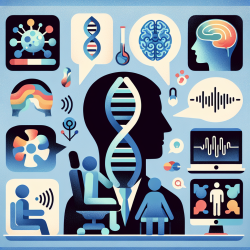Introduction
As a Special Education Director, I understand the challenges faced by practitioners working with adolescents. The recent research article, Change Over 11–13 Year Periods in Quality of Life, Emotional Problems and Negative Stressful Life Events Among 13–17 Year Old Students, provides valuable insights into the evolving landscape of adolescent mental health. This study, conducted in Norway, highlights the stability and changes in self-reported quality of life (QoL), emotional problems, and negative stressful life events (SLE) among adolescents over more than a decade. By leveraging these findings, practitioners can enhance their skills and improve outcomes for the students they serve.
Key Findings and Implications
The study revealed several critical findings:
- A 50% increase in reported emotional problems among both girls and boys over the 11-year period.
- An increase in sexually uncomfortable or abusive acts reported by girls, from 3.7% to 7.0%.
- Few significant changes in overall QoL, but specific domains such as family and school showed improvements for girls and boys, respectively.
These findings underscore the need for targeted interventions in schools, where adolescents spend a significant portion of their time. Practitioners should focus on addressing emotional problems and creating a safe environment to prevent sexual abuse and violence.
Strategies for Practitioners
To effectively address these challenges, practitioners can consider the following strategies:
- Enhance Screening and Assessment: Implement comprehensive screening tools to identify emotional problems and QoL issues early. This proactive approach allows for timely interventions and prevents the escalation of mental health issues.
- Foster Safe Environments: Create a supportive and safe school environment where students feel comfortable reporting uncomfortable or abusive acts. This can be achieved through anti-bullying programs and clear reporting mechanisms.
- Promote Emotional Well-being: Integrate social-emotional learning (SEL) programs into the curriculum to equip students with skills to manage stress, build resilience, and improve emotional regulation.
- Collaborate with Parents and Community: Engage parents and community stakeholders in discussions about adolescent mental health. This collaboration can lead to a more comprehensive support system for students.
Encouraging Further Research
The study highlights the need for continued research to understand the underlying causes of the observed trends. Practitioners are encouraged to engage in further research to explore:
- The impact of digital media on adolescent mental health.
- The role of socioeconomic factors in shaping QoL and emotional well-being.
- Effective interventions for reducing the prevalence of negative SLEs.
Conclusion
By integrating the findings from this research into practice, practitioners can better support adolescents in navigating the complexities of their mental health. It is crucial to remain vigilant and adaptive to the changing needs of students, ensuring that they have the resources and support necessary to thrive.
To read the original research paper, please follow this link: Change Over 11–13 Year Periods in Quality of Life, Emotional Problems and Negative Stressful Life Events Among 13–17 Year Old Students.










